Most kids enjoy coloring. Even adults have nostalgic responses when they think about coloring. “I loved coloring when I was a kid,” or “I used to have that big 64-box of Crayolas, and I couldn’t wait to open a new box and use a crayon for the first time.”
Coloring has always been, part art and part comfort. In recent years coloring has become quite popular for both children and adults, and part of the reason for this is because coloring it is becoming recognized as a tool that can relieve stress, anxiety, and many other mental health challenges.
In a recent article the Mayo Clinic explored the mental health benefits of coloring. Let’s explore some of these and see how they can be positively impactful for children and adults.
Research shows that coloring calms your brain and activating your parasympathetic nervous system. A recent study found that coloring can help people reduce symptoms of anxiety and depression. As a form of art therapy, coloring helps participants stay in the present moment, (focus), relieve anxiety and create positive emotions.
Coloring is something anyone can do, from a young child to an adult. There are few barriers to entry, as crayons and pictures to color cost very little money, and no skill is needed to participate in the activity. There are also many different adaptations that can be made to coloring, so it is doable for most ability levels.
There is no right or wrong way to color, and when you color, you are in control of the colors you select and the way you color the picture. You can color for as long, or as little as you like, and when you color you aren’t competing with anyone else…it is just you, your crayons, pencils or pens, and the picture. You can color in the lines, out of the lines or extend the lines…it is your artwork, and the only thing that matters is whether or not you enjoyed the time you’ve spent coloring
A recent study found that coloring can reduce pain in children who are having medical procedures, like having their blood drawn. Researchers found that children’s fear of medical procedures decreased when they were actively participating in coloring, as a therapeutic intervention. Coloring elicited a relaxation response in the children which increased their ability to deal with the pain of having medical procedures performed.
Although coloring isn’t the ultimate cure for stress and anxiety, sitting down for a long coloring session holds great value. As you color, pay attention to your breathing rhythm, ensuring steady, full breaths from your diaphragm, and tune into your heart rate periodically if you can. Coloring can help reduce anxiety, stress, pain and depression. It provides a much needed break from the constant overstimulation of daily life, and serves as an important form of play, even for adults and older kids.
Coloring as a mindful activity has a lot of benefits, but it also relates to mindfulness as it brings attention to the present moment.
Coloring, by its very nature, is mindful. The repetitive motion, like that of a rocking chair, elicits feelings of calm. The focus required by coloring helps shift the mind from random thoughts and worries into a more peaceful space of creativity. Coloring guides you to being aware of the present moment, the key tenant of mindfulness.
Like all mindful-based practices, begin this coloring activity with setting an intention. An intention is simply an objective or outcome you or your child would like to experience during and after this mindful activity. You might say to your child, “I see that you are worried about your math test. Would you like to take a coloring break?” When your child is finished coloring, ask how the activity made them feel. You can say something like, “Since you just found that coloring made you feel happier and more relaxed, let’s remember to try it again when you are feeling anxious or worried.”
Remind them of the benefits they experienced coloring and tell them to add coloring into their toolbox of self-care practices. In time, they will remember and seek activities that are calming, even without adult prompting.
That means choosing what to color, what to color with (pencils, markers, etc.), and how long to color. This also means where to color: at the kitchen table, on the floor with their pet, or even outside under a tree. It’s important to let children take the lead and complete this activity in a way that is the most soothing to them.
Parents often wonder which medium is best: crayons, markers, or colored pencils? Provide options, but leave the choice up to your child. While some children prefer crayons because of the seemingly endless array of colors, occupational therapists and early childhood educators often recommend colored pencils. This is because colored pencils can be sharpened to a nice point and accurately used in small spaces. The reason some children are more comfortable with crayons is because they’ve never been given the opportunity to use anything else.
Parents love to avoid messes, but consider oil pastels and markers, too. Oil pastels might smear a bit more, but they offer a wonderful sensory experience as they are smooth when they glide across the paper. Markers also offer a rainbow of colors and are sometimes scented. Coloring is already visual and tactile, so adding scented markers, if your child is okay with different smells, makes the experience olfactory too. If your child enjoys music, having a calming track playing in the background adds another sensory level to the experience.
You might even find there is a certain song that you use every time your child colors. The song will remind the child of the other peaceful times they have had coloring, so when they hear their coloring music, they are ready to easily slip into their mindful coloring.
Interested in more practices like mindful coloring designed to help your child relax and unwind? Wee Meditate has hours of meditative and mindful guided stories, exercises, and music that teach kids meditation in a way they learn best: through a storybook world. Want some inspiration to get started? Try listening to Bunny’s Magic Coloring Book* to get started!

